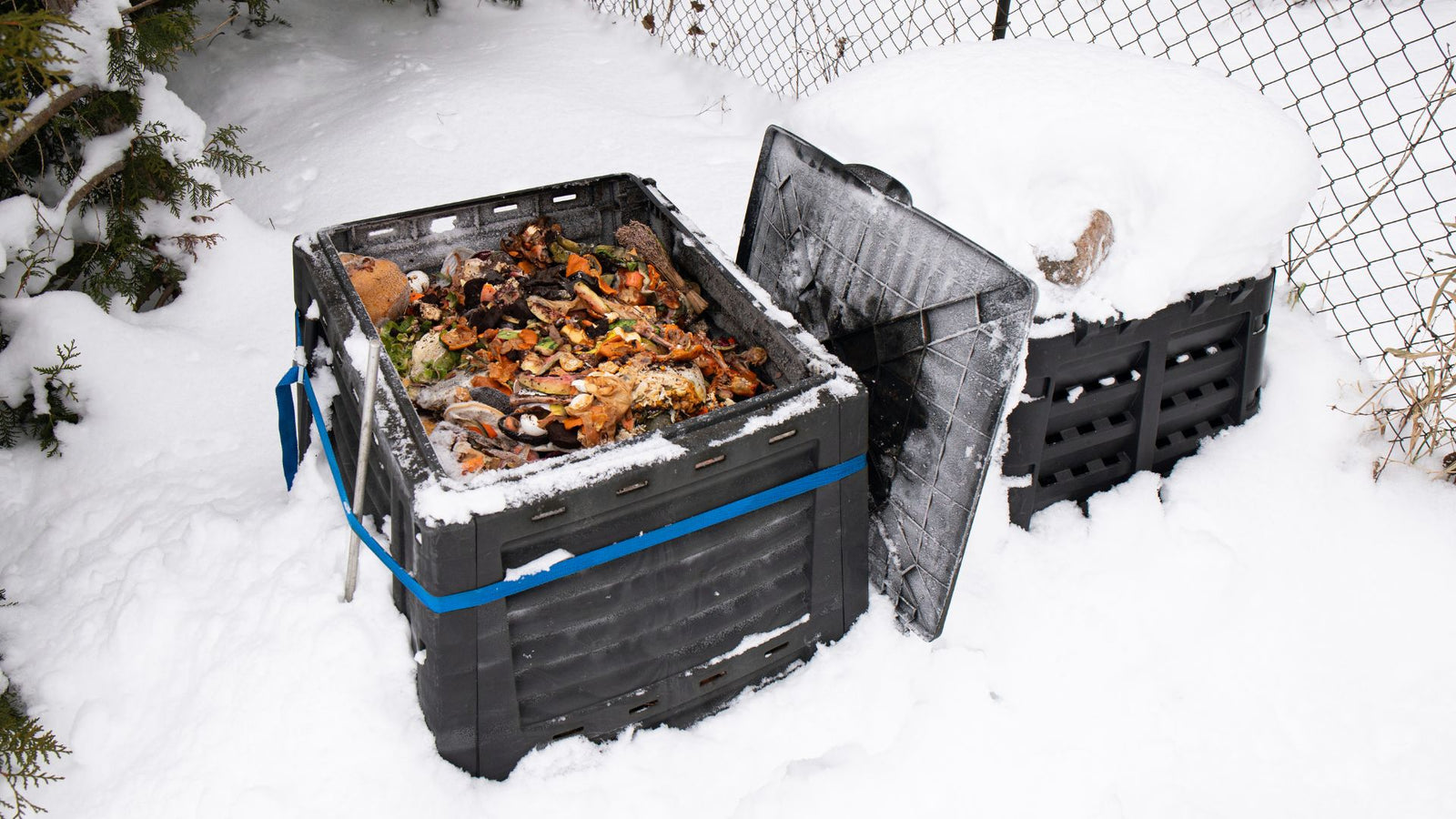"Can you compost in the winter?" This question comes up often as temperatures begin to drop. We already know the incredible environmental benefits of composting, and it’s understandable why so many of us want to continue this sustainable practice year-round.
The good news? Composting in winter isn’t all that different from composting in warmer weather. While you’ll need to make some adjustments for the colder conditions, composting through the winter is definitely possible. In this guide, we’ll cover the essential steps to keep your compost pile active even when it’s cold outside.
What Happens When Composting in Winter?
The ideal temperature for composting is between 90 and 140°F (about 32 to 60°C). During winter, however, temperatures can dip to between 15 and 45°F, far lower than what’s needed for most organisms to thrive and do their decomposing work. This means decomposition will naturally slow down compared to the warmer months.
Although the process may be sluggish, some resilient organisms can survive and continue the breakdown process. Think of winter as a “slow prep” stage. When temperatures rise again in the spring, the compost pile will come back to life, with more organisms stepping in to speed things up.
Key Considerations for Winter Composting
To keep your compost active through winter, there are a few things to keep in mind:
1. Choose the Right Spot for Your Compost Pile
Even in winter, there are still sunny days, so position your compost pile where it can soak up as much sunlight as possible. However, it’s also essential to protect it from harsh winds, heavy snow, and rain. Consider using a sheltered spot, perhaps against a wall or fence, for added insulation.
Additionally, don’t place your compost pile too close to water sources like lakes or streams. Even in cold weather, nutrients can still leach into the water, which could cause pollution.
2. Balance Your Green and Brown Materials

After the fall, there’s usually an abundance of brown materials like leaves and crop leftovers, making it a perfect time to stock up. Some people choose to use only brown materials in winter to avoid attracting pests or creating odors. If you’d like to add green materials (such as kitchen scraps) to your pile, consider storing them in the freezer until you have enough to mix in with brown materials. Just remember to adjust the ratio, with more brown materials and less green to maintain balance in the slower winter composting process.
You can also compost eco-friendly kitchen products! Compostable items from EQUO, like straws, cutlery, and food containers, break down in any environment and count as brown materials.
For any green materials, chop them into small pieces before adding them to the pile. Smaller pieces create more surface area, allowing microorganisms to work more efficiently.
3. Keep Your Compost Warm
Covering your compost pile with a black plastic tarp or bag can help retain warmth and moisture, which is essential during winter. A tarp also protects the pile from snow and ice. You can even tape several black garbage bags together to make a larger cover if needed.

Open the tarp occasionally on warmer days to water the pile lightly, ensuring it stays moist. Avoid watering on freezing days, as the water might freeze right away.
4. Limit Turning the Pile
Since decomposition naturally slows in cold temperatures, you don’t need to turn the pile as frequently. In fact, it’s better to leave it mostly undisturbed, turning it just once during the season unless it starts to smell or becomes overly wet. In that case, add more brown materials to balance out the moisture and prevent any unpleasant odors.
Composting Year-Round for a Sustainable Future
Composting can seem complex at first, especially during winter, but it’s a fulfilling and eco-friendly way to manage waste. Making small changes, like switching from single-use plastics to compostable products and keeping up with composting even in winter, shows a commitment to sustainable living. Not only does it benefit you, but it also makes a lasting positive impact on the environment.
With these tips, you’re now prepared to tackle winter composting. Embrace the habit in every season, and continue working toward a greener future!


